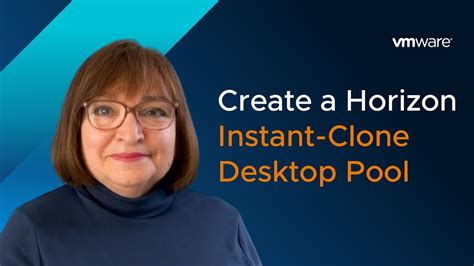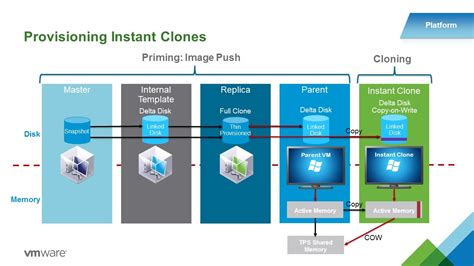instant clones with app volumes boot up video I would also consider using App Volumes to deliver applications to your users. Keeping your image as thin as possible makes monthly updates easier, and app volumes allows you to deliver app updates without updating the whole image. Launched in 1971, the Explorer II is the worthy heir to the Explorer and shares its same qualities of resistance to extreme conditions. Perfectly waterproof and able to withstand icy polar conditions, it is distinguishable from its predecessor by its unique face.
0 · vmware instant clone pool
1 · instant clone vmware
Explorer IIExploration to the ends of the Earth. Explorer and Explorer IIAll models. Configure. Oyster Perpetual. Explorer. Explorer 36. Oyster, 36 mm, Oystersteel and yellow gold. Explorer II. Oyster, 42 mm, Oystersteel.
vmware instant clone pool
I would also consider using App Volumes to deliver applications to your users. Keeping your image as thin as possible makes monthly updates easier, and app volumes allows you to deliver app updates without updating the whole image.
Instant Clone pools do not support the creation of a persistent virtual disk. If you have a requirement to store a user’s profile and application data on a separate disk, you can use the writeable disk feature of VMware App Volumes to store this data. The App Volumes writeable volume can also be used to store user installed applications. For . Horizon 2306 (8.10) and newer support Persistent Disks with dedicated Instant Clones. See Omnissa 93091 Guidelines for Persistent Disk Migration from Horizon 7 Environments to Horizon 8. An alternative is Microsoft FSLogix, or App Volumes Writable Volumes. See Instant-Clone Desktop Pools at Omnissa Docs.We are using Horizon in two pods and are transitioning to all instant clone VMs. We haven’t updated to Dynamic Environment Manager and are on UEM still. We are using the full profile option for FSLogix as well. Probably overkill but it’s working consistently.
why do rolex watches feel cheap
instant clone vmware
One of its most innovative offerings is Instant Clones, a technology that revolutionises the way virtual desktops are provisioned and managed. In this blog post, we'll explore how Horizon Instant Clones work, their benefits, and .
Very clever and full marks to VMware for getting this out. However for an average IT shop, instant clones don’t bring in any significant value over linked clones. For a shop where 10,000 desktops must be spun up every morning within 5 mins, instant clones are boon. I would also consider using App Volumes to deliver applications to your users. Keeping your image as thin as possible makes monthly updates easier, and app volumes allows you to deliver app updates without updating the whole image. Instant Clone pools do not support the creation of a persistent virtual disk. If you have a requirement to store a user’s profile and application data on a separate disk, you can use the writeable disk feature of VMware App Volumes to store this data. The App Volumes writeable volume can also be used to store user installed applications. For . Or you can use a Layering product (e.g. Omnissa App Volumes, Microsoft MSI-X App Attach, Liquidware FlexApp) or App Streaming (e.g. ThinApp, Microsoft App-V). Note: logins are fastest if apps are installed in the master image.
Horizon 2306 (8.10) and newer support Persistent Disks with dedicated Instant Clones. See Omnissa 93091 Guidelines for Persistent Disk Migration from Horizon 7 Environments to Horizon 8. An alternative is Microsoft FSLogix, or App Volumes Writable Volumes. See Instant-Clone Desktop Pools at Omnissa Docs.
We are using Horizon in two pods and are transitioning to all instant clone VMs. We haven’t updated to Dynamic Environment Manager and are on UEM still. We are using the full profile option for FSLogix as well. Probably overkill but it’s working consistently. One of its most innovative offerings is Instant Clones, a technology that revolutionises the way virtual desktops are provisioned and managed. In this blog post, we'll explore how Horizon Instant Clones work, their benefits, and .Very clever and full marks to VMware for getting this out. However for an average IT shop, instant clones don’t bring in any significant value over linked clones. For a shop where 10,000 desktops must be spun up every morning within 5 mins, instant clones are boon.
An instant-clone desktop pool is an automated desktop pool created from a golden image using the vmFork technology (called instant clone API) in vCenter Server. If we go the App Volumes & UEM road -> Use instant-clones (dedicated & floating) that are clean at every login. Scale-Out App Volumes and make sure it is highly available. An outage of the App Volumes infrastructure will lead to a severe End-User impact. In Part 1 of this tutorial, I showed how to set up and install VMware's breakthrough Instant Clone technology. Now I'll demonstrate how to deploy it, and give an overview of its strengths and weaknesses.
rolex watches cheap prices
I would also consider using App Volumes to deliver applications to your users. Keeping your image as thin as possible makes monthly updates easier, and app volumes allows you to deliver app updates without updating the whole image.
Instant Clone pools do not support the creation of a persistent virtual disk. If you have a requirement to store a user’s profile and application data on a separate disk, you can use the writeable disk feature of VMware App Volumes to store this data. The App Volumes writeable volume can also be used to store user installed applications. For .
Or you can use a Layering product (e.g. Omnissa App Volumes, Microsoft MSI-X App Attach, Liquidware FlexApp) or App Streaming (e.g. ThinApp, Microsoft App-V). Note: logins are fastest if apps are installed in the master image.
Horizon 2306 (8.10) and newer support Persistent Disks with dedicated Instant Clones. See Omnissa 93091 Guidelines for Persistent Disk Migration from Horizon 7 Environments to Horizon 8. An alternative is Microsoft FSLogix, or App Volumes Writable Volumes. See Instant-Clone Desktop Pools at Omnissa Docs. We are using Horizon in two pods and are transitioning to all instant clone VMs. We haven’t updated to Dynamic Environment Manager and are on UEM still. We are using the full profile option for FSLogix as well. Probably overkill but it’s working consistently. One of its most innovative offerings is Instant Clones, a technology that revolutionises the way virtual desktops are provisioned and managed. In this blog post, we'll explore how Horizon Instant Clones work, their benefits, and .Very clever and full marks to VMware for getting this out. However for an average IT shop, instant clones don’t bring in any significant value over linked clones. For a shop where 10,000 desktops must be spun up every morning within 5 mins, instant clones are boon.
An instant-clone desktop pool is an automated desktop pool created from a golden image using the vmFork technology (called instant clone API) in vCenter Server. If we go the App Volumes & UEM road -> Use instant-clones (dedicated & floating) that are clean at every login. Scale-Out App Volumes and make sure it is highly available. An outage of the App Volumes infrastructure will lead to a severe End-User impact.


Key Features and Functions. The GMT-Master II is equipped with several key features that enable its dual time zone capabilities while remaining an exceptionally durable and accurate timepiece. Some of the key features include: Case Size: 40mm. Materials: Stainless steel; Everose Rolesor; 18k Everose Gold; 18k White Gold.
instant clones with app volumes boot up video|instant clone vmware



























